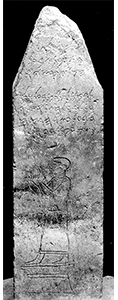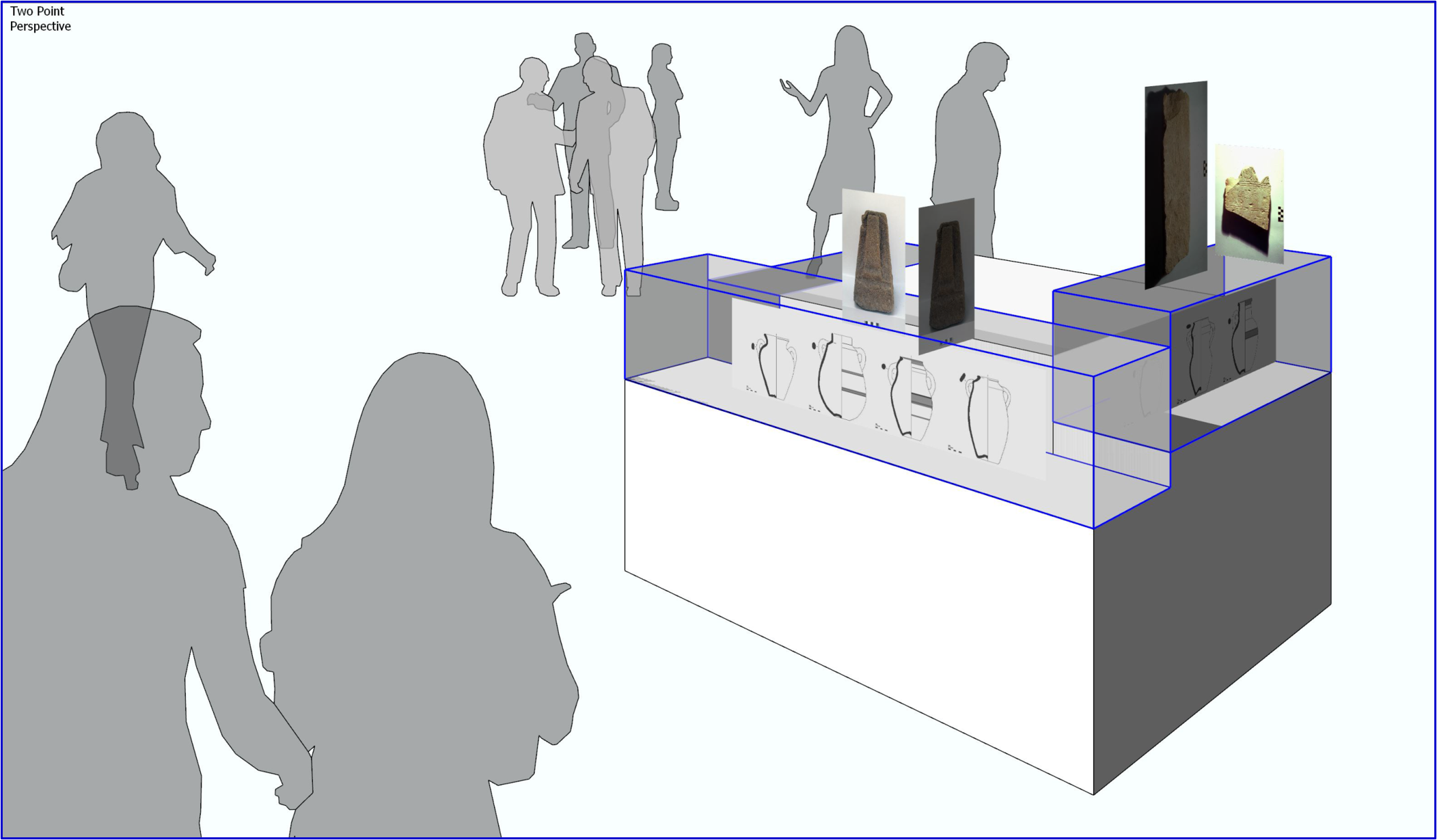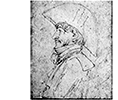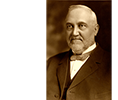 3D models 3D models |
ASOR PUNIC PROJECT • ANNIVERSARY EXHIBITION
lead investigator: A. Brody (Badè Museum of Biblical Archaeology–PSR)
coordinators: B. K. Garnand (NINO/HMANE) & J. A. Greene (HMANE)
|
about | partners
 |
American Excavations • Precinct of Tinnit & Baᶜl • OpenContext
Upcoming anniversaries of American excavations offer an opportunity to reassess the importance of Carthage, famous for its contacts and conflicts with Greeks and Romans across the Mediterranean and infamous for its alleged ritual infanticide. Two American teams conducted excavations at the city's liminal open-air votive precinct, where one finds cremated infant remains buried in urns beneath stone memorials bearing dedications to the Mistress ( rbt), to Tinnit Visage-of-Baᶜl ( tnt pn bᶜl), and to the Lord ( ᵓdn), to Baᶜl Ḥammon ( bᶜl ḥmn–example at left).
The Carthaginian precinct remained in use from the city's foundation (ca.800 BCE) until its destruction by Rome (146 BCE). Thousands of inscribed stelae found there provide the vast majority ( > 90%) of the Phoenician-Punic epigraphic corpus and provide evidence for the development and transfer of alphabetic writing; thousands of uninscribed stelae add to iconographic and stylistic repertoires; and key amulet and urn typologies arise from this site. In sum, no Phoenician precinct stands anywhere near equal in importance to this singular sanctuary, one of the most studied and least understood cultural features of Phoenician-Punic society. Interpretation of the site remains difficult—on the one hand, because of a lack of data since final reports have not been forthcoming; on the other, because depictions of Carthage have arisen from complex Orientalist and colonialist contexts, both ancient and modern—thus these votive inscriptions and their associated infant dedications continue to foster polemical debate.
sample: dedication of BᶜLᶜZR, 350-300 BCE ( CIS I.3784, Bardo Cb–442)
©2023 KMA Carthage Excavation Archives ( Swain 5.554) |
 |
Anniversary Exhibition — interpreting the tophet in context
How can we use archaeological evidence from stratigraphic contexts to reconstruct ritual? How do these precincts demonstrate ancient criteria of ethnic identity relating to shared kinship, shared language, common shrines & sacrifices, and common customs & ways of life (Herodotus History 8.144)?
central module (C. Copeland) with stratigraphic contexts
front face: introductory panel; side face: lower stratum with decorated urns; rear face: middle stratum with rough cippi; side face: upper stratum with fine stelae; on top, scale 3D model of the propriété Regulus-Salammbô with stelae in place.
thematic wall panels (surrounding central module)
Kelsey & Stager teams; stratigraphic methods; archaeological imaging (drawings-squeezes-3D models); site reconstruction (photos-plans); comparable tophet sites; iconography; urn types; bead & amulet types; alphabetic writing & votive formula; paleo-osteology of infants & juvenile animals; rituals of infancy & motherhood
3D proof-of-concept
RMO urns & ceramics • RMO cippi & stelae
|
 |
Before the open-air sanctuary was located precisely, European diplomatic missions to the Bey of Tunis sparked interest in collecting Carthaginian artifacts, some found near the precinct by J.-E. Humbert (left) are now in the Rijksmuseum van Oudheden (e.g. H1-H4) and those taken by C. T. Falbe are in the Nationalmuseet Danmarks (e.g. ABb91-92). Only after a century of speculative and clandestine removal of stelae did excavation begin in the early 1920s at the votive precinct proper. |
 |
F. W. Kelsey was first drawn to Carthage in 1893, when he purchased “duplicate” artifacts from Rev. A.-L. Delattre MAfr ( Missionarii Africae, aka Pères Blancs “White Fathers”), and these eventually became the first objects registered in the University of Michigan archaeological collection. In 1924 Delattre had supported excavations by the dilettante B. Kuhn de Prorok (both pictured at left) with the abbé J.-B. Chabot interpreting inscribed stelae.
sample: l to r, A.-L. Delattre MAfr, B. Khun de Prorok, E. Huguenot MAfr
©2023 KMA Carthage Excavation Archives ( Swain 7.2050)
|
 |
At the invitation of Delattre, Chabot, and de Prorok (whose father-in-law arranged financial backing), F. W. Kelsey (left) undertook an exploratory season in what was envisioned as a multi-year campaign. At the University of Michigan he had the backing of Committee on Near East Research, as well as outside backing from the Archaeological Institute of America Washington DC society (AIA–DC) and from the University of Rochester. Despite continued support from these institutions and from Delattre and Chabot, the difficulties of exporting artifacts, a scandal enveloping de Prorok, and the declining health of Kelsey combined to limit the University of Michigan campaign to one season without final publication.
|

|
After Kelsey, unscientific excavations were resumed in the 1930s by Rev. G.-G. Lapeyre MAfr, followed by poorly published excavations led by P. Cintas in the 1940s. The UNESCO Campagne internationale de sauvegarde de Carthage allowed an American team led by L. E. Stager (left) to resume excavation in the same terrain that de Prorok had once purchased, as well as to begin new excavations at the nearby commercial harbor. The ASOR Punic Project campaigns at the precinct continued from 1975-1979, after which funding was exhausted. As the 50ᵗʰ anniversary approaches, publication of the final archaeological report is imminent.
|
|
|
partners | about
|
ASOR PUNIC PROJECT :: ANNIVERSARY EXHIBITION
|

|
|

|
GRADUATE THEOLOGICAL UNION (GTU)
Badè Museum - Pacific School of Religion (PSR)
Doug Adams Gallery - Center for the Arts & Religion (CARe)
A. Brody (Bade-PSR), E. Peña (Doug Adams Gallery-CARe)
The Badè Museum of Biblical Archaeology, long at the forefront of the digital humanities, serves as the lead institution of the ASOR Punic Project. They will host digital interactive displays as well as 3D models and replicas from Carthage, continuing their mission to make archival resources available to broader audiences. The Doug Adams Gallery will share the in-person exhibition.
|

|
HARVARD UNIVERSITY
Harvard Museum of the Ancient Near East ( HMANE)
Center for Middle Eastern Studies East ( CMES) - Tunisia
P. Der Manuelian & A. Aja (HMANE), S. Lamine (CMES-Tunisia)
The HMANE hosts the archives of L. E. Stager as well as ASOR Punic Project excavation records and artifacts. Those artifacts on loan for study are now designated for exhibition before repatriation to Tunisia. Through the HMANE, all records of the ASOR Punic Project are hosted by the Harvard Libraries Digital Repository Service ( DRS), which provides a permanent digital object identifiers for archived images and .pdf documents.
We have also received financial support from the Shelby White and Leon Levy Program for Archaeological Publications ( White-Levy Grant, 2014), which is housed within HMANE.
The CMES is our local partner in Tunisia, providing support for our proposals made in partnership with the INP for the exhibition and repatriation of Carthaginian artifacts and for the conservation and preservation of the site.
|

|
UNIVERSITY OF MICHIGAN
Kelsey Museum of Archeology ( KMA)
N. Terrenato
The KMA hosts the F. W. Kelsey excavation archives, while the Bentley Historical Library holds his correspondence. The museum collection includes squeezes and drawings of inscriptions, general registry cards and field notes, as well as the photographic archive of G. R. Swain.
|

|
UNIVERSITY OF OXFORD
Ashmolean Museum ( Ashmolean)
A. Ulbrich
The Ashmolean houses records and artifacts from the F. W. Kelsey excavations that were transferred to the museum by D. B. Harden as a key member of the University of Michigan excavations (1925), as a Commonwealth Fellowhip researcher in Ann Arbor (1926-28). He visited Carthage again as an assistant keeper (1933) before becoming Keeper of the Department of Antiquities at the Ashmolean (1945-56). Artifacts from his 1930s study formed the basis of a seminal Punic ceramic typology ( Harden 1937).
|

|
THE BRITISH MUSEUM
Department of the Middle East ( BM)
The British Museum has ceramics donated by D. B. Harden immediately following the Kelsey-UMichigan excavations. When the six urns and various fragments were accessioned in 1927, the Keeper of Egyptian and Assyrian Antiquities deemed the donation "very acceptable, as Carthaginian pottery has hitherto been poorly represented in the collection" ( Hall 1927).
|

|
UNIVERSITY OF CHICAGO
Institute for the Study of Ancient Cultures: West Asia & North Africa ( ISAC)
C. López-Ruiz & J. D. Schloen
The L. E. Stager excavations were undertaken under the auspices of ISAC (at that time called the Oriental Institute). The Institute also served as the training ground for ASOR Punic Project team members D. L. Esse (who succeeded L. E. Stager at Chicago), S. R. Wolff (IAA), and J. A. Greene (HMANE), as well as B. K. Garnand (NINO/HMANE).
|

|
HOGESCHOOL SAXION (Saxion)
Archaeology Program
L. Opgenhaffen & M. Sepers
The faculty at Saxion have built upon theoretical models and practical experience derived from creating 3D reproductions both of stone markers (e.g. Power in the Sands, Archaeology-Leiden) and of ceramics (e.g. Tracing the Potters Wheel, Archaeology-ACASA/UvA). They have provided access to equipment for proof-of-concept scanning and continue to advise us about issues conceptual and logistical.
|

|
NORTH AFRICAN HERITAGE ARCHIVE NETWORK ( NAHAN)
E. Fentress
This project priovides a platform for documents from archaeological archives held in a series of European and North African institutions. This open-access resource harvests data from documents already online.
|

|
INSTITUT NATIONAL DU PATRIMOINE (INP)
Musée national de Carthage & Musée national du Bardo
I. ben Jerbania & A. Ferjaoui
Our Tunisian colleagues have supported our efforts toward publication and exhibition, have supported the return of artifacts taken abroad on loan for study, and support in principle our proposed non-destructive analyses of artifacts. We hope to apply the methods from our proof-of-concept exercise to artifacts in Tunisia, with high-definition 3D scanning and with replicas limited to those given prior authorization.
|

|
CORPUS INSCRIPTIONUM PHOENICARUM (CIP)
Istituto di Studi sul Mediterraneo Antico (ISCMA)
Centro de Ciencias Humanas y Sociales (CCHS)
P. Xella (ISCMA-CNR/UTübingen) & J.-Á. Zamora (CCHS-CSIC)
Increasing accessibility to Punic inscriptions remains a primary goal of our initiative, and we will build upon the progress of the CIP in making images, transcriptions and commentary available in a searchable digital format.
|

|
THE ALEXANDRIA ARCHIVE INSTITUTE (OpenContext.org)
E. Kansa & S. Kansa
The OpenContect platform will host the database and catalog of the HMANE-ASOR Punic Project, part of their broader mission of preserving digital archaeological records, drawing our data from the Harvard Libraries Digital Repository Service ( DRS).
|
|
|
|